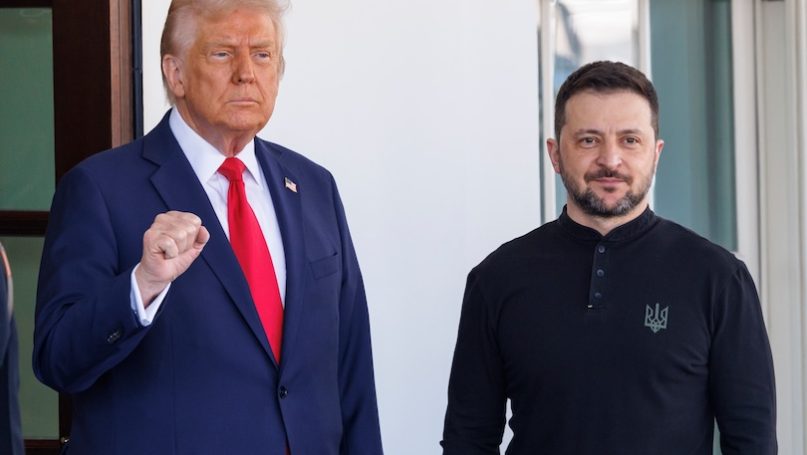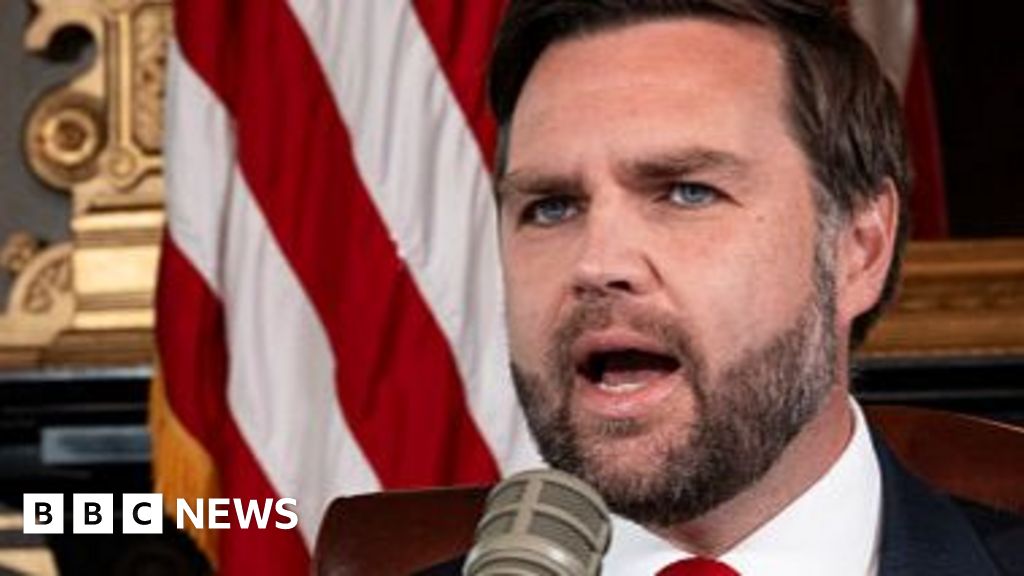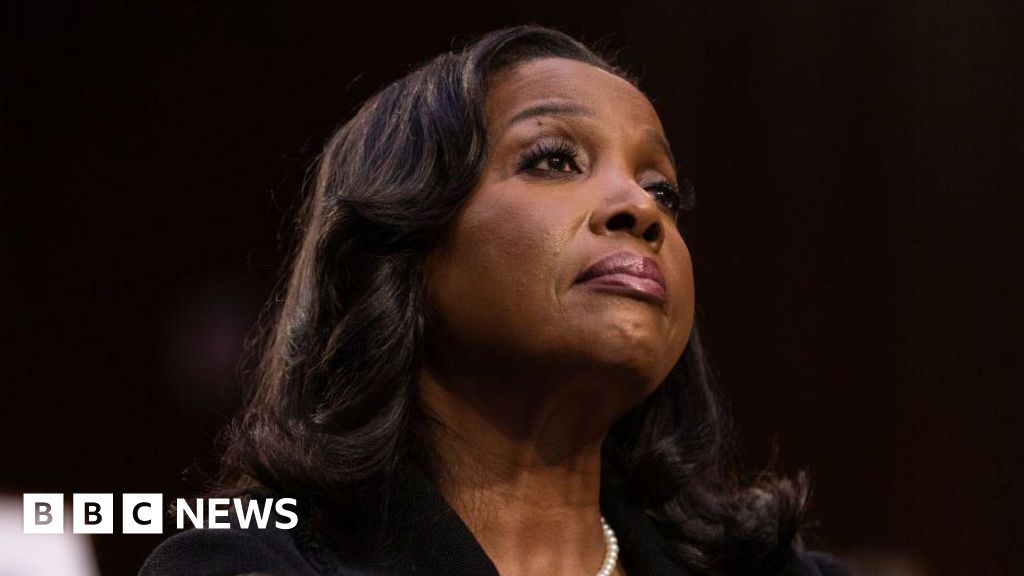
Joshua Sukoff/Shutterstock
Just a few years ago, the COVID-19 pandemic appeared to transform the landscape of high-level leader diplomacy. As global lockdowns brought international travel to a near standstill, video conferencing platforms like Zoom quickly took center stage, replacing the traditional handshake with the digital square of a screen. Many observers predicted this shift would become permanent, citing the time-efficiency, lower costs, and reduced risks of digital diplomacy. Yet the return to in-person diplomacy has been swift and emphatic. According to global leader visit data collected by Moyer and his team, heads of state and government undertook 3,013 international trips in 2019. That number dropped to 1,027 in 2020, during the height of the COVID-19 lockdowns. By 2021, visits began to rebound (1,848 in total), nearly returning to pre-pandemic levels in 2022 (2,946), and exceeding them in 2023 with 3,521 trips. The upward trend continues in 2025, a year already marked by headline-grabbing diplomatic visits. The recent meeting between Ukrainian President Volodymyr Zelensky and U.S. President Donald Trump in Washington sent shockwaves across the globe.
The media also closely followed speculation about where President Donald Trump would make his first overseas trip in his second term, a visit that ultimately materialized in Saudi Arabia. In an effort to secure the prestige of hosting this inaugural trip, the Saudis reportedly spent billions to stage the occasion. Alongside trillions of dollars in investment pledges from Saudi Arabia, the UAE, and Qatar to the United States, Trump’s Gulf tour featured tectonic interactions with the potential to reshape regional dynamics. His meeting with Syria’s President Ahmed al-Shara—once a leader of the uprising that ousted Bashar al-Assad— in Saudi Arabia marked not only a stunning political turnabout but also a moment of symbolic recognition that may bolster the legitimacy of Syria’s new regime. Trump also encouraged al-Shara to normalize relations with Israel, a move that could lead to dramatic shifts in the region. In the European theatre, prior to Trump’s Gulf tour, French President Emmanuel Macron, German Chancellor Friedrich Merz, British Prime Minister Keir Starmer, and Polish Prime Minister Donald Tusk traveled to war-torn Ukraine to facilitate a direct ceasefire dialogue between President Zelensky and Russian President Vladimir Putin.
The talks were scheduled to take place in Turkey. Zelensky flew to Ankara not only to meet Turkish President Recep Tayyip Erdoğan but also in anticipation of a potential visit by Putin to Istanbul. While still in the Gulf, Trump declared that he would join the summit in Istanbul if both warring leaders agreed to meet for truce negotiations. Following Putin’s decision not to travel to Turkey, Zelensky proceeded to Albania, where European leaders were convening for the European Political Community summit. In real time, face-to-face interactions among high-level leaders are reshaping the international order before our eyes. The balance of power across Europe and the Middle East—and their evolving ties with the United States—is being redrawn through the direct involvement of individual leaders. Structural forces undoubtedly set the stage, but it is the personal diplomacy of these figures that is actively constructing the contours of a new geopolitical landscape. It is therefore time to give long-overdue scholarly attention to leader visits as a central, not peripheral, feature of global politics.
In ancient China, leaders’ visits served as highly ceremonial functions, symbolizing and affirming good relations between states. The cessation of such visits by princes was often perceived as a casus belli, indicating that regular court visits were essential to maintaining a status of friendly relations. Since then, the heads of states from around the world have met occasionally while minister-level actors traveled more. However, it was after the Second World War that such high-level visits became a routine aspect of interstate relations. Technological innovations—ships, trains, airplanes, and jet engines—made long-distance travel safer, faster, and more comfortable, enabling a dramatic increase in leader mobility. Despite the availability of professional diplomats tasked with conducting these relations and the comfort offered by telecommunication technology, leaders have increasingly undertaken the time-consuming, and high-priced endeavor of traveling abroad. For decades, leader visits, however, were treated mostly as anecdotal elements within diplomatic history, rarely subject to systematic scrutiny. But over the past ten years, academic interest has surged. A growing body of qualitative and quantitative scholarship—published in top journals—has begun to uncover the strategic, symbolic, and performative dimensions of these high-level interactions.
Scholars have increasingly demonstrated that studying leader visits offers valuable insights into a wide range of outcomes in international politics. Research in economics, for instance, shows that these visits can boost trade, attract foreign investment, and facilitate the flow of foreign aid. But the impact of leader diplomacy goes well beyond economics. Political scientists have found that high-level visits can reduce the risk of regional conflict, improve human rights conditions, deter hostile rivals, and bolster support for incumbent governments. They can also reassure allies, improve a country’s image abroad, and even reshape the architecture of international relations. Domestically, international travel allows leaders to project an image of authority and global stature—what some have described as appearing “presidential”. Such visits can help unify public opinion, particularly during times of crisis or uncertainty. By drawing attention to their foreign policy credentials, leaders may generate a rally effect at home, strengthening their political standing.
High-level leader visits are more than just numbers on a chart—they reveal the human side of global diplomacy. A growing group of scholars has explored how personal relationships between leaders, especially from rival states, can foster empathy and trust during summit meetings. These interpersonal connections sometimes help break through long-standing political deadlocks that seem impossible to resolve through formal negotiations alone. Researchers offer different explanations for how face-to-face interactions build trust. Some point to socialization—how repeated meetings shape leaders’ behavior and mutual understanding. Others highlight the benefits of belonging to a shared diplomatic culture or “community of practice.” Still others emphasize that consistent, personal contact over time can help leaders move beyond rigid structural barriers and rethink their strategic calculations. Despite the recent surge in scholarship on leader visits, this rich area of study remains ripe for further research.
While existing research has explored how leader visits can serve as a tool of deterrence, surprisingly little attention has been paid to visits to and from countries actively engaged in war. The case of Ukraine offers a powerful counterpoint, showing that high-level visits continue—and even intensify—during conflict. Since Russia’s invasion in 2022, dozens of world leaders have traveled to Ukraine to demonstrate solidarity. Kyiv’s Constitution Square has become a symbolic site of these visits, marked by the “Walk of the Brave”—a commemorative path honoring those who stood with Ukraine. Polish President Andrzej Duda was the first to be recognized with a plaque for his steadfast support, followed by numerous others including U.S. President Joe Biden and former UK Prime Minister Boris Johnson. These leaders walked through the square alongside President Volodymyr Zelensky, turning each visit into a highly visible act of commitment. More recently, as Donald Trump reframed the discourse from supporting Ukraine’s war effort to seeking peace with Russia, a new wave of leader visits followed—this time with the goal of brokering a ceasefire. Contrary to the assumption that war diminishes diplomatic travel, the Ukrainian case shows that modern conflicts can, in fact, trigger a surge in high-profile visits. This overlooked dimension of wartime diplomacy demands deeper scholarly attention.
Donald Trump’s recent Gulf tour secured a staggering $600 billion investment commitment from Saudi Arabia to the United States. Accompanying him were prominent business figures such as Elon Musk and Sam Altman, signaling a coordinated effort to attract Saudi capital. In return, Riyadh clinched a landmark arms deal worth nearly $142 billion—hailed as “the largest defense cooperation agreement” in U.S. history. But the visit’s significance extended beyond defense. In a major breakthrough for Saudi Arabia’s technological ambitions, Nvidia agreed to sell hundreds of thousands of advanced AI chips to the kingdom. The first shipment—18,000 of Nvidia’s cutting-edge “Blackwell” chips—will go to Humain, a new AI startup launched by Saudi Arabia’s sovereign wealth fund. In exchange for its massive investment pledge, Riyadh gained privileged access to the most advanced defense and AI technologies available today. Arms and technology transfers are among the most consequential drivers of international politics. Trump’s tour underscores how such strategic exchanges are often cemented through leader visits. As a result, scholars should pay closer attention to how these visits shape, enable, and accelerate high-stakes global transfers of power and innovation.
Although Trump did not set foot in Syria, his Gulf tour included direct engagement with the country’s new leader, al-Shara. This highlights a crucial but often overlooked dynamic in diplomatic practice: leader interactions in third-party countries. Such encounters—outside the formal boundaries of bilateral visits—can have transformative consequences. In this case, Turkish President Recep Tayyip Erdoğan joined a pivotal meeting remotely, alongside Trump, Saudi Crown Prince Mohammed bin Salman, and al-Shara. During the conversation, Erdoğan emphasized Turkey’s support for a stable and prosperous Syria that peacefully cooperates with its neighbors and poses no threat to regional security. The outcome was extraordinary. Trump announced the complete removal of all U.S. sanctions on Syria—restrictions that had been in place since the late 1970s. This decision marks a watershed moment for the war-torn country. With sanctions lifted, the door is now open for foreign investment, economic recovery, and broader international engagement. This development underscores the need for scholars to look beyond official state visits and pay greater attention to diplomatic interactions that occur in multilateral or third-country settings. These meetings may well be where the most consequential decisions of our time are being made.
Further Reading on E-International Relations
About The Author(s)
Ali Balcı is Professor of International Relations in Sakarya University, Turkey. He obtained his MA and PhD degrees from the Department of International Relations at Sakarya University. He is the author of Turkey’s Foreign Policy: Principles, Actors, Practices [in Turkish] (Alfa, 2021), The PKK-Kurdistan’s Workers Party’s Regional Politics During and After the Cold War (Palgrave, 2017), and others. He is now working on Ottoman international order, UN Security Council and diplomatic visits of Middle Eastern leaders.
Before you download your free e-book, please consider donating to support open access publishing.
E-IR is an independent non-profit publisher run by an all volunteer team. Your donations allow us to invest in new open access titles and pay our bandwidth bills to ensure we keep our existing titles free to view. Any amount, in any currency, is appreciated. Many thanks!
Donations are voluntary and not required to download the e-book - your link to download is below.

 Movie
Movie 3 months ago
144
3 months ago
144 






![Presidents Day Weekend Car Sales [2021 Edition] Presidents Day Weekend Car Sales [2021 Edition]](https://www.findthebestcarprice.com/wp-content/uploads/Presidents-Day-Weekend-car-sales.jpg)



 English (United States)
English (United States)